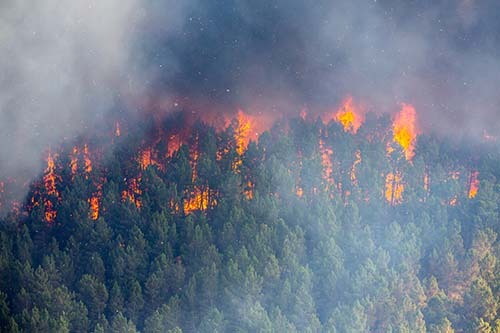VIDEO AVAILABLE
This summer, record-breaking hot temperatures in British Columbia were met with a higher-than-average number of wildfires across the province. Extremely hot days caused by climate change are expected to lead to longer wildfire seasons which will burn larger areas, and public health officials will need to adapt their existing advice for prolonged smoky periods.
This webinar will:
- Review trends and population health impacts of extreme heat and forest fires
- Explain how the built environment can contribute to and protect against extreme heat and wildfire smoke exposure in cities
- Explore local and national policy options to reduce harmful effects of extreme heat and wildfire smoke exposure
About the presenter:
 Sarah Henderson is a Scientific Director in Environmental Health Services at BCCDC. She is also an Associate Professor in the UBC School of Population & Public Health.
Sarah Henderson is a Scientific Director in Environmental Health Services at BCCDC. She is also an Associate Professor in the UBC School of Population & Public Health.
Dr. Henderson leads a program of applied research and surveillance to support evidence-based policy for the province. This role requires her to be a generalist rather than a specialist and her work spans a wide range of topics, including air pollution from all provincially relevant sources (wildfire smoke, residential woodsmoke, industry, road dust, shipping, and vehicles), extreme weather events, radon gas, food safety, water quality, and exposures managed by the Drug and Poison Information Centre (DPIC). All of her work integrates large environmental datasets with large human health dataset from multiple sources, and she views data science as a key competency in environmental health.
